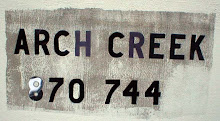From Hendrik Hertzberg at The New Yorker here. (See my previous post here.)
California, it turns out, is ungovernable. Its public schools, once the nation’s best, are now among the worst. Its transportation and water systems are deteriorating. Its prisons are so overcrowded that it has to turn tens of thousands of felons loose. And its legislature has spent most of the year in a farcical effort to pass the annual budget, leaving little or no time for other matters, such as—well, schools, transportation, water, and prisons. This is “normal”: the same thing has happened in eighteen of the past twenty-two years. But the addition of economic disaster to legislative paralysis may have brought California to a tipping point.
A good deal of the trouble may be fairly blamed on the Golden State’s tarnished initiative process, whereby laws and amendments to the state constitution can be proposed by petition and enacted by referendum. Adopted nearly a century ago as a great progressive reform—at the time, the California legislature was essentially a bought-and-paid-for subsidiary of the Southern Pacific Railroad—the initiative process began to go seriously sour in the mid-nineteen-sixties, when frightened voters nullified a fair-housing law and passed a measure, sponsored by movie-theatre owners, to ban cable television. (Both were voided by the courts.) The nadir, some would say, came in 1978, when Proposition 13 essentially capped property taxes and made California the only state that requires a two-thirds vote of the legislature both to adopt a budget and to raise a tax. The decline in public services was one result. Another has been a distortion of the state’s politics. Conservative Republican legislators have little incentive to compromise or even to broaden their appeal; to prevail on most of what is important to them, all they need is one-third plus one.
California’s constitution, with its five hundred or so amendments, is so long that its full text would occupy every line of the magazine you are holding. Thanks largely to initiatives, many of them well intentioned, it is also wildly at odds with itself. It contains so many set-asides and mandates that the legislature can control only about seven per cent of the state budget even when it deigns to pass one. But California’s nemesis could soon become its salvation. Something remarkable is beginning to happen.
It started almost exactly one year ago, modestly enough, with an op-ed piece in the San Francisco Chronicle. Echoing Jefferson, the author, Jim Wunderman, wrote, “It is our duty to declare that our California government is not only broken, it has become destructive to our future. Therefore, are we not obligated to nullify our government and institute a new one?” He then called for a “citizens’ constitutional convention” to do the nullifying and the instituting. Wunderman heads the Bay Area Council, a business group not normally considered part of the vanguard of the revolution. (Its board consists of C.E.O.s and other executives from companies like Bank of America, McKinsey & Company, Chevron, Google, United Airlines, and the Federal Reserve Bank of San Francisco.) But Wunderman’s op-ed manifesto engendered a broad response, and the response has engendered something like a movement.
That movement, called Repair California, is trying to put two initiatives on next year’s ballot. One would amend the California constitution to allow the voters to call a constitutional convention by initiative. (As it is, while specific amendments can be passed that way, it takes two-thirds of the legislature to call a convention. That will never happen.) The other would actually call the convention and specify its scope: governance, including the structure of the legislative and executive branches; elections, including the electoral system and the initiative process itself; the budget-making process; and the state’s revenue relationship with local government.
The genius of Repair California’s approach is twofold. First, it steers clear of “social issues”: no gay marriage, no abortion, no affirmative action. Second, the delegates would be chosen randomly from the adult population. (Appointed delegates, Repair California reasons, would be beholden to whoever appointed them; and if the delegates were elected, the elections would inevitably be low-turnout affairs dominated by money and the organized clout of special interests.) The convention itself would be an exercise in what is called “deliberative democracy.” The delegates would spend months studying the issues, consulting experts, debating among themselves, and forging a consensus. The result would be put to a vote of the people, yes or no, in November of 2012.
To have faith in such a process requires a faith in the good sense and sincerity of ordinary people—a faith that just about everybody professes. The beauty part is that no one can know what the delegates would come up with—which is why the idea has won such broad support. Besides the capitalists of the Bay Area Council, the center-left New America Foundation loves it. So does the left-left Courage Campaign, a partner of MoveOn.org. And so does the lame-duck governor. It’s “brilliant,” Arnold Schwarzenegger says.
The only limitation on the citizen-delegates, within their subject matter, would be the federal Constitution’s guarantee to every state of “a republican form of government,” which is to say a free and popular one: no hereditary kings, please. But the convention would be at liberty to choose from the full menu of democratic forms and structures, of which the standard eighteenth-century American model—a president or governor, a lower house or assembly, and a senate, all separately elected—is only one. If California has the courage and imagination to become a true laboratory of democracy, the experiment will be something to see.

No comments:
Post a Comment